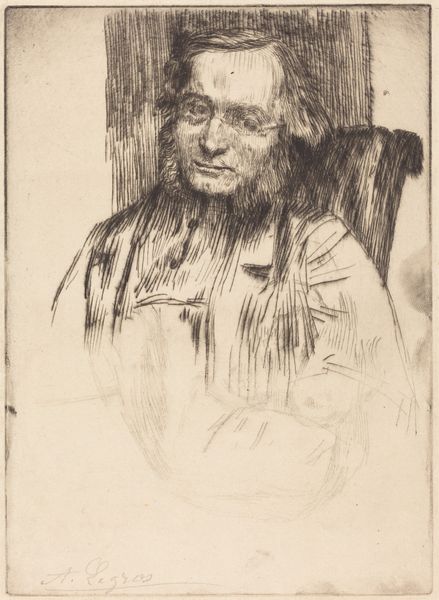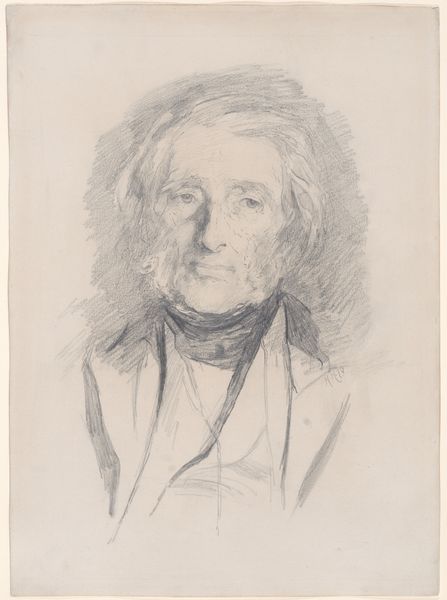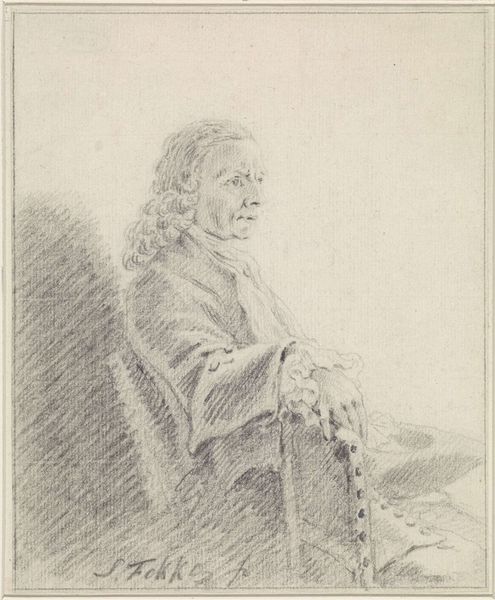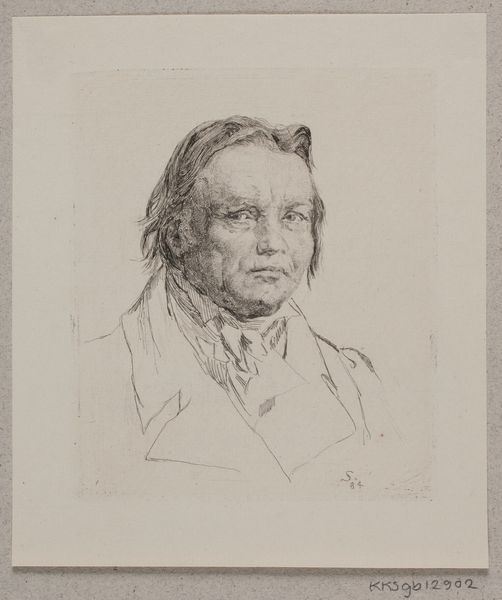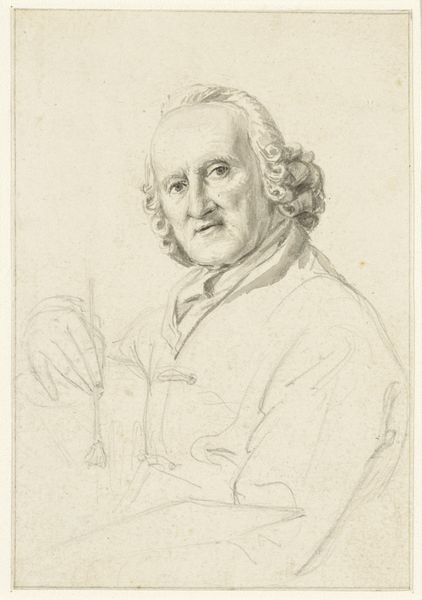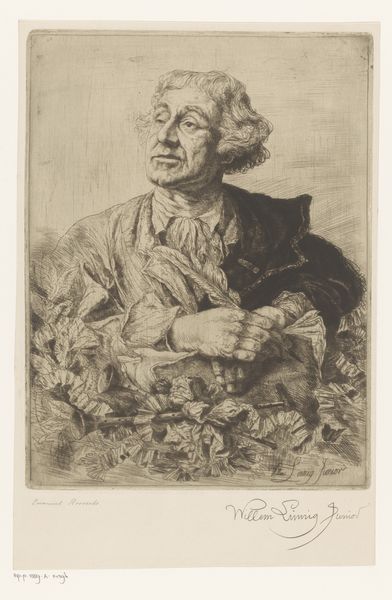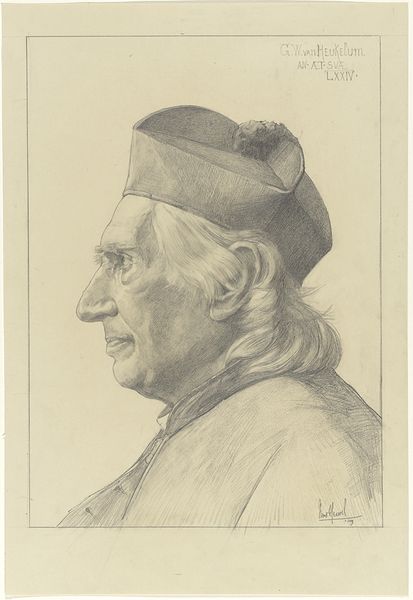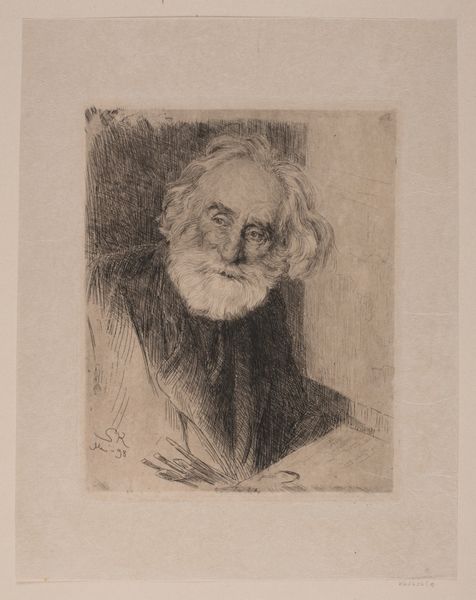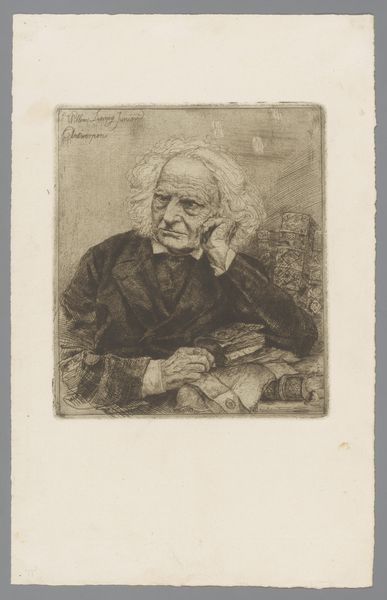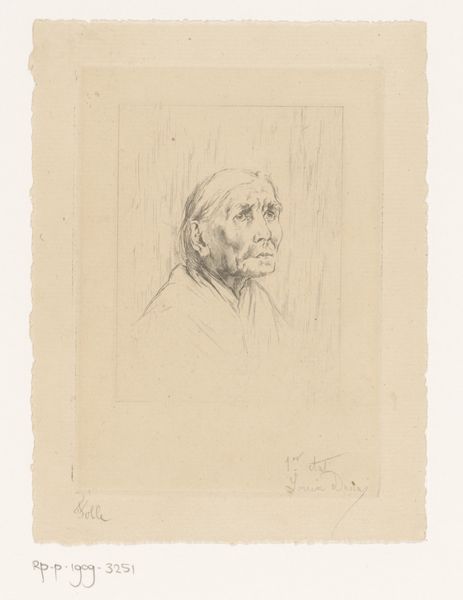
Dimensions: 177 mm (height) x 156 mm (width) (bladmaal)
Editor: So here we have Wilhelm Marstrand's pencil drawing of B.S. Ingemann from 1859. There's a real sense of quiet contemplation to it, wouldn't you say? It’s like a captured moment of inner reflection. What catches your eye most in this piece? Curator: It's that gentle dance between detail and suggestion. Marstrand's not trying for photorealism; instead, he evokes Ingemann's presence, his spirit, with these delicate, almost hesitant lines. Notice the hands, loosely clasped—they speak of weariness, perhaps, or simply a comfortable acceptance of time’s passage. Does it strike you as a little melancholy? Editor: A little, perhaps. But I also see a sense of dignity. The lines around his eyes hint at stories, experiences etched into his face. Curator: Exactly! And consider Ingemann himself – a prominent poet and novelist of the Danish Golden Age. This isn't just a portrait; it’s a meeting of two artistic minds. What do you make of the light in the drawing? How does it shape the mood? Editor: It's subtle, almost a muted glow, which adds to the feeling of intimacy, like we're sharing a quiet moment with him. The Romanticism style emphasizes the emotion, right? Curator: Absolutely. Romanticism delved into the emotional landscape. Marstrand’s rendering isn't about surface appearances but about revealing the soul. And I love how unfinished it feels, that sense of the ephemeral, like a memory fading at the edges. Editor: That's a lovely thought. I hadn't considered that before, the ephemeral nature of a sketch adding to the emotion. I’m seeing it in a completely different light now. Curator: Isn't it wonderful when a little observation opens up new avenues of appreciation? That's the joy of art, isn't it?
Comments
No comments
Be the first to comment and join the conversation on the ultimate creative platform.
